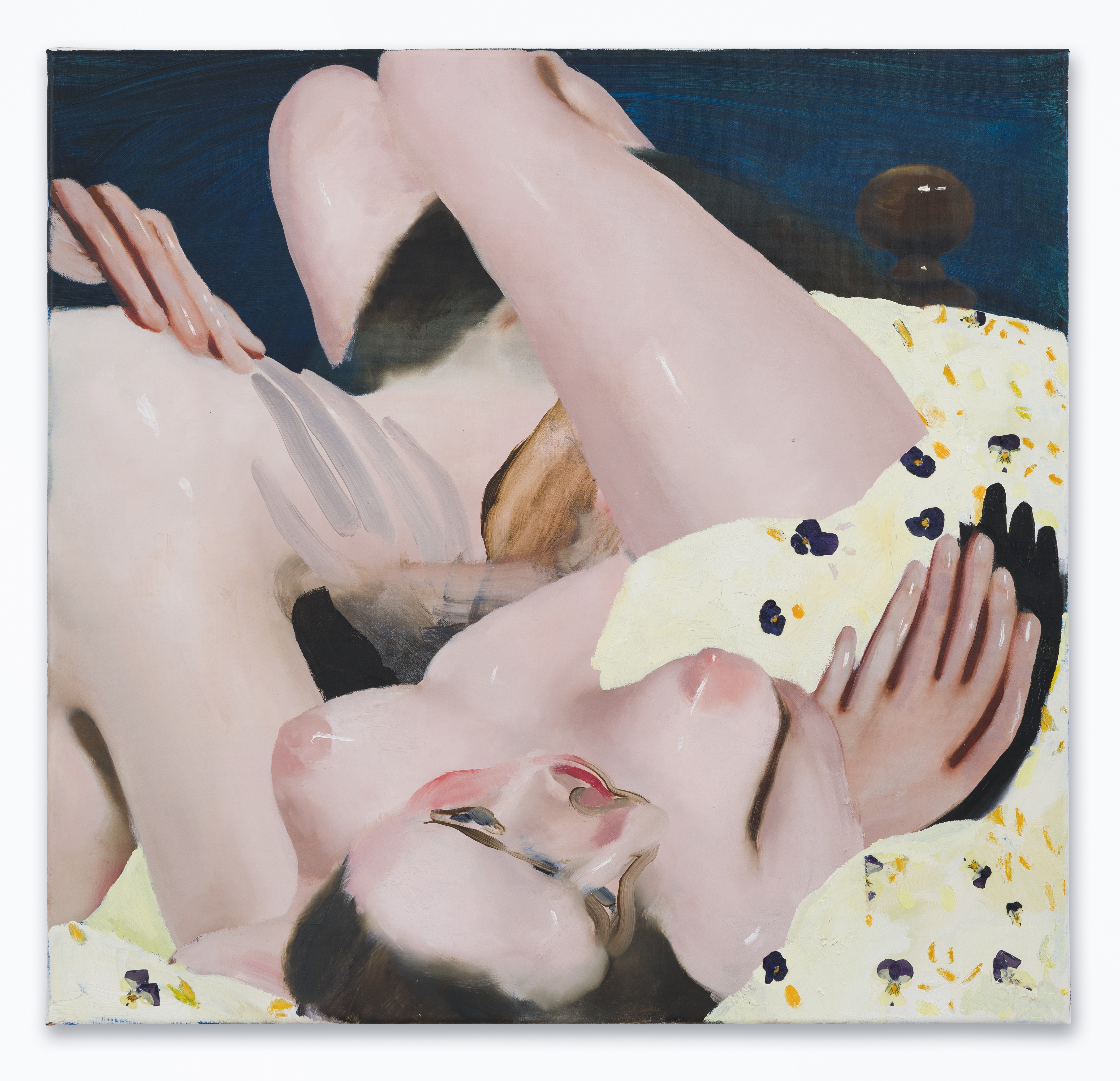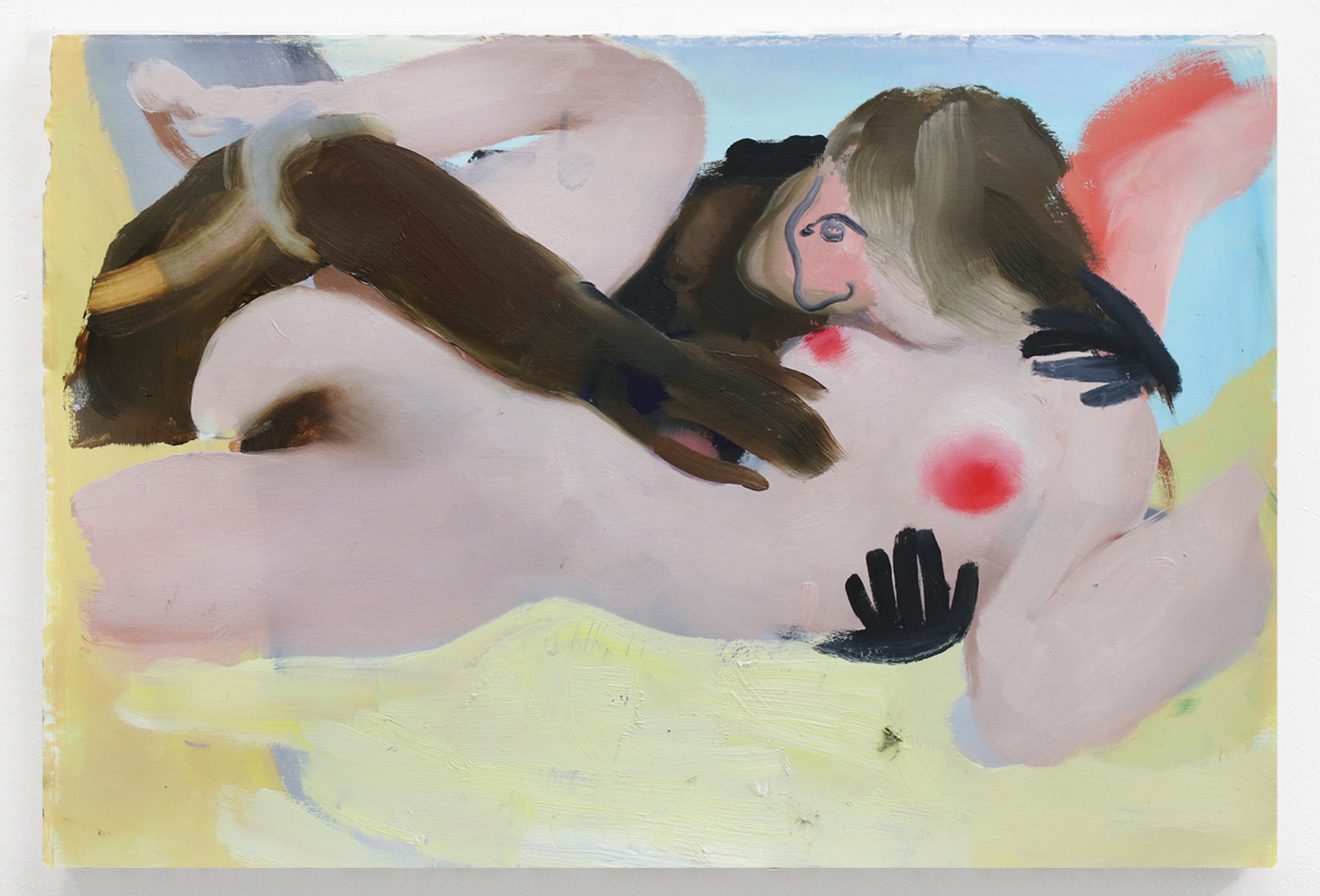
There is a distinctive sheen given to the bodies that you paint, in reference to the smooth surface of porcelain. How and why did you first begin to incorporate these material qualities into your work?
I started using porcelain as a surrogate for the body—specifically the female body—a few years ago after painting a porcelain sink. It had an anthropomorphic quality. As a substitute it felt more powerful and offered a space for subjectivity that an actual body didn’t necessarily provide. The etymology of porcelain stems from pork, from the visual similarity between the opening of a cowrie shell and the exposed genitalia of a female swine. The word’s origins have also been likened to the sound created by the boorish whistle after a beautiful girl—it is a feminized material and I wanted to critically incorporate its language into the canon of figuration. I was also interested in pushing sensuality to the point of absurdity, turning it into something very perverted.
Why are these bodies frequently tangled, distorted or bent double?
I am searching for ways to pictorially structure female desire, an endeavour that almost always coincides with an internalized male gaze—so there is rarely a singular sense of a body or self in the paintings. There is distortion, mirroring and, as much as the bodies appear lost in erotic acts, there is an awareness that they perform for the viewer as well.
But beyond these politics I look for an intuitive rhythm or cadence in the composition that is in service of the picture, and not contingent on a faithful likeness of a body, which results in distortion. The paintings fail if they forgo sensation for the boredom of conveyance. I want them to reach a state where they can be interpreted but not explained.

What is your process of painting? Do you work from sketches and photographs or more instinctively with your materials directly on the canvas?
I’ll often work from very rudimentary sketches that focus on something simple: a crease where a body part touches itself, or the place where two bodies make contact. That erotically-charged moment becomes the central axis from which the rest of the painting develops. From there I work with materials and let the painting respond to itself. I keep it wet for as long as possible so it’s often about moving paint from one part of the surface to another, rather than a process of addition.
“I work with materials and let the painting respond to itself. I keep it wet for as long as possible”
There is a dark humour that runs through your work, seen particularly on your Instagram feed, where you juxtapose isolated body parts with unexpected everyday items, from stick-on nails to a fried egg. The results are quite uncanny. Where do these curious assemblages come from, and how do they feed into your attitude to your paintings?
I suppose both of them share a desire to substitute inward uncertainties for outward appearances. Both of them blur the boundaries between animate and inanimate, but Instagram
is a good place to execute bad ideas or one-liners that don’t seem well-suited for painting but that keep the train of thought rolling anyway.

Who are some of the artists or broader art historical movements that have influenced you, and how do you approach incorporating this type of research into your paintings?
For some time I was interested in the Romantic canon
and its artists, who—in the midst of revolution—conceptualized violent spectacle as an engine of self-understanding and renewal. I explore that sentiment from a feminist perspective and appropriate visual motifs of different canons to redirect a critique toward the uncanny and erotic characteristics that constitute historical representations of women. I’m an audience for whom these paintings were not intended but I experience them as if for the first time, so they are very much contemporary paintings to me. I don’t think about things canonically or vertically, more so horizontal or circular. I’m interested in atemporality.
Animals occasionally appear in your paintings. What role do they play in your work?
I love their accessibility, and the ease with which we project our subjectivity on them. They don’t occupy time inside a painting the way people do. I often choose animals that are inbred or engineered; they are sexual or symbolic surrogates but they also encourage familiarity, empathy and love.





